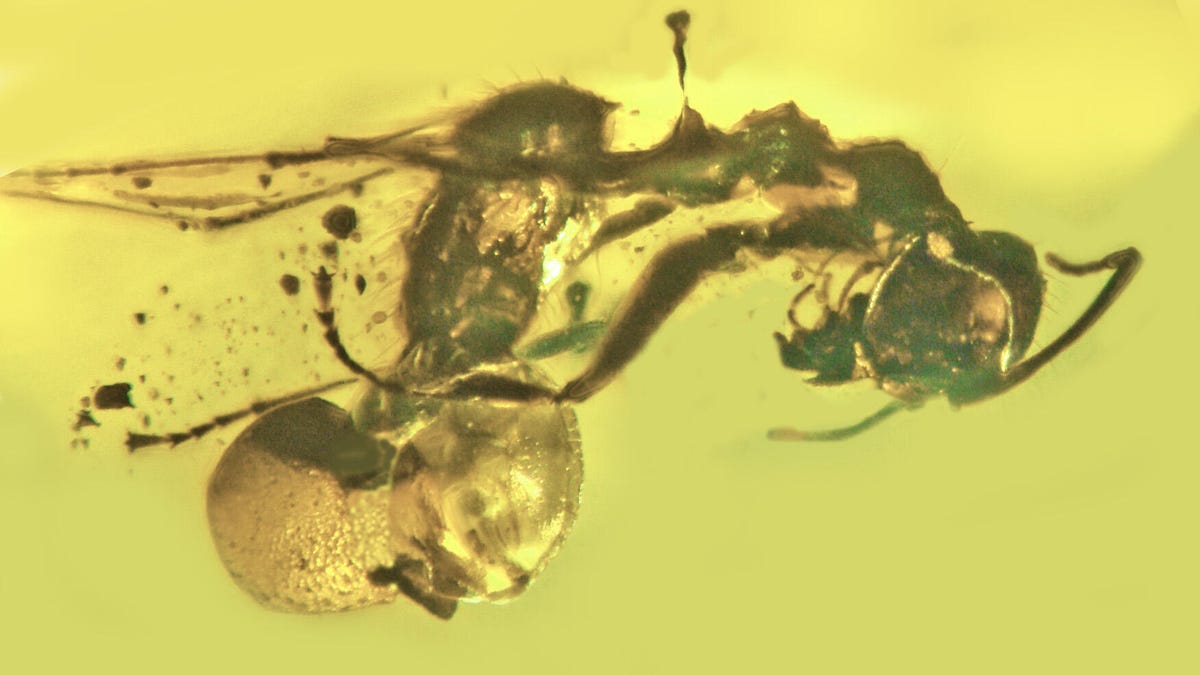Ant trapped in ancient amber with parasitic mushroom stuck in its butt
That's one way to go down in history.
Stay with me here. Scientists found an ant trapped in 50-million-year old amber, but it wasn't alone. It had a parasitic fungus that grew a mushroom out of its rectum. I know this sounds gross, but I promise it's cool, scientifically speaking.
The amber came from the Baltic region of Europe and contains a carpenter ant. In a statement on Wednesday, Oregon State University said the discovery is "the oldest known specimen of a fungus parasitizing an ant, and the fossil also represents a new fungal genus and species."
Amber like this offers a pretty literal window into the past. The frozen moment in time represents a very bad day for the ant, but also for the fungus that wasn't able to continue spreading. It was, however, a win for scientists.
Here's that closeup of the ant rectal mushroom that you wanted to see.
OSU amber expert George Poinar Jr. is the lead author of a study on the ant and fungus published in the journal Fungal Biology. Poinar is familiar to amber fans for his research into everything from "mold pigs" to oddball insects that have been trapped and preserved in fossilized tree resin.
The fungus bears a resemblance to known fungus species that target ants, but the emergence of the mushroom from the butt rather than the neck or head is part of what led the researchers to declare it a new discovery. The study authors named the fungus "Allocordyceps baltica" in a nod to its geographic origin.
"This is the first fossil record of a member of the Hypocreales order emerging from the body of an ant," Poinar said. "And as the earliest fossil record of fungal parasitism of ants, it can be used in future studies as a reference point regarding the origin of the fungus-ant association."
You don't need to be a fungus or ant researcher to appreciate this fascinating view into insect history. It has a horror-story-like attraction, like Alien, but with an ant instead of a person. And a rectal mushroom instead of a chest-bursting alien baby. Close enough.


